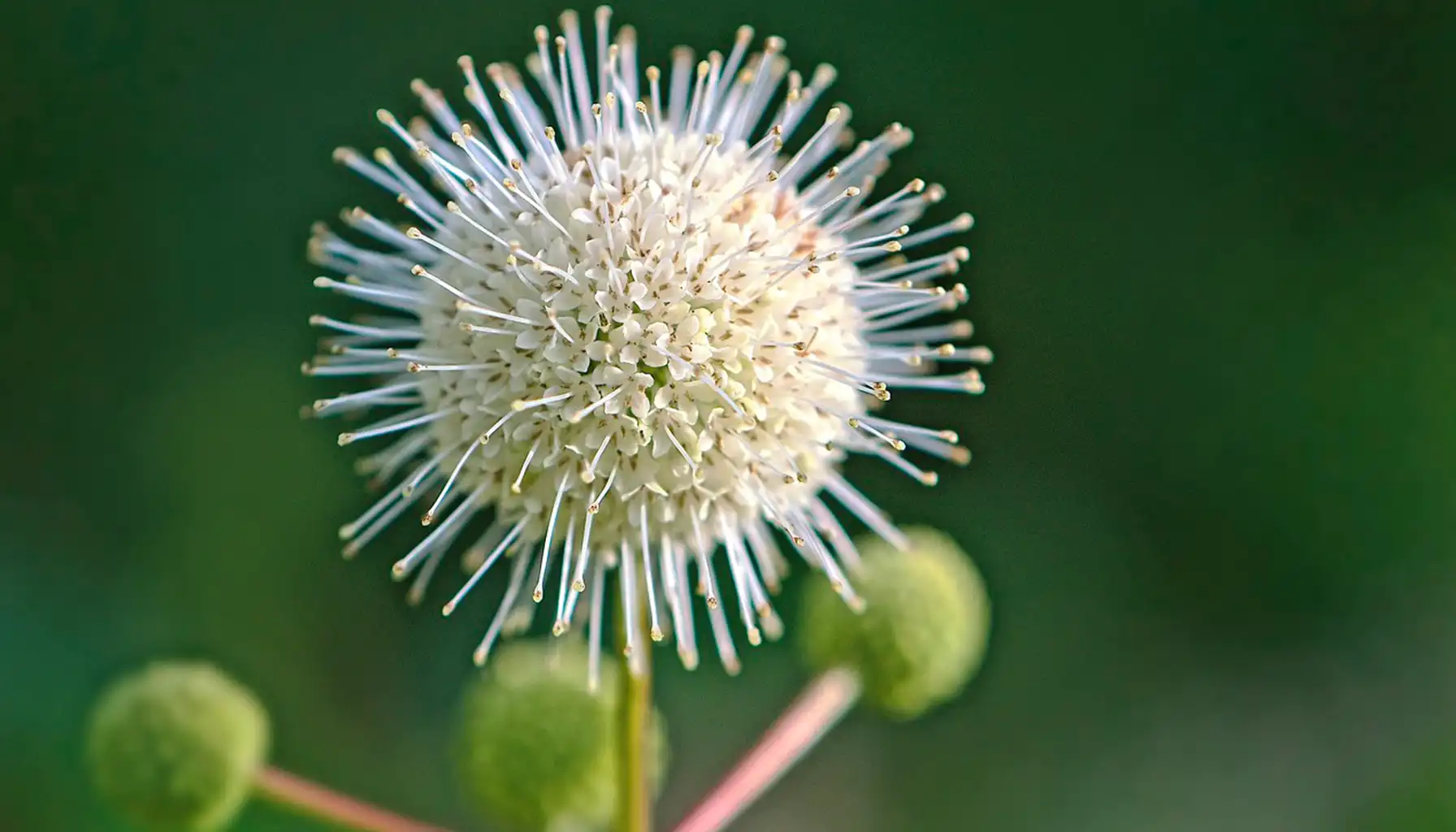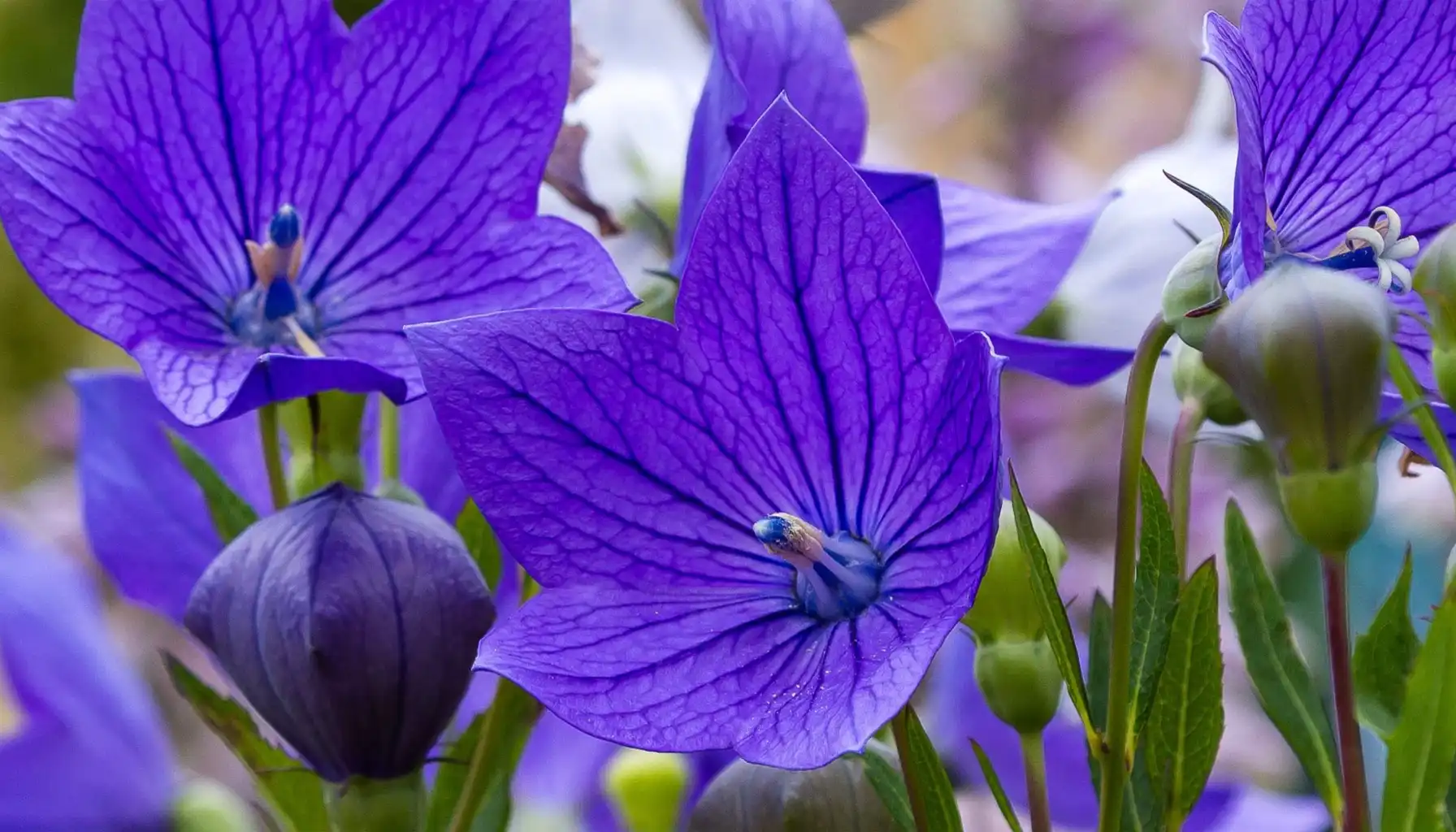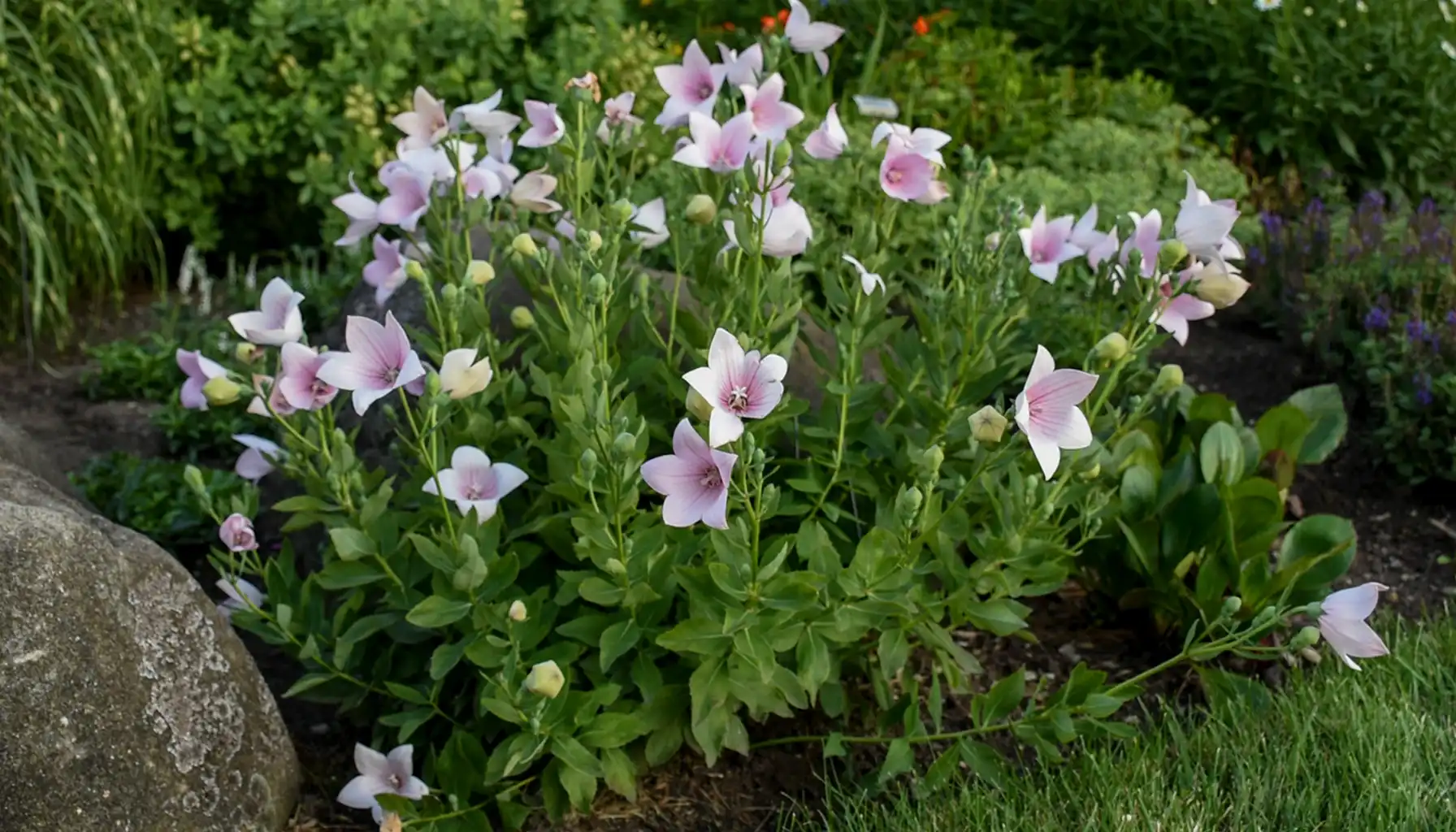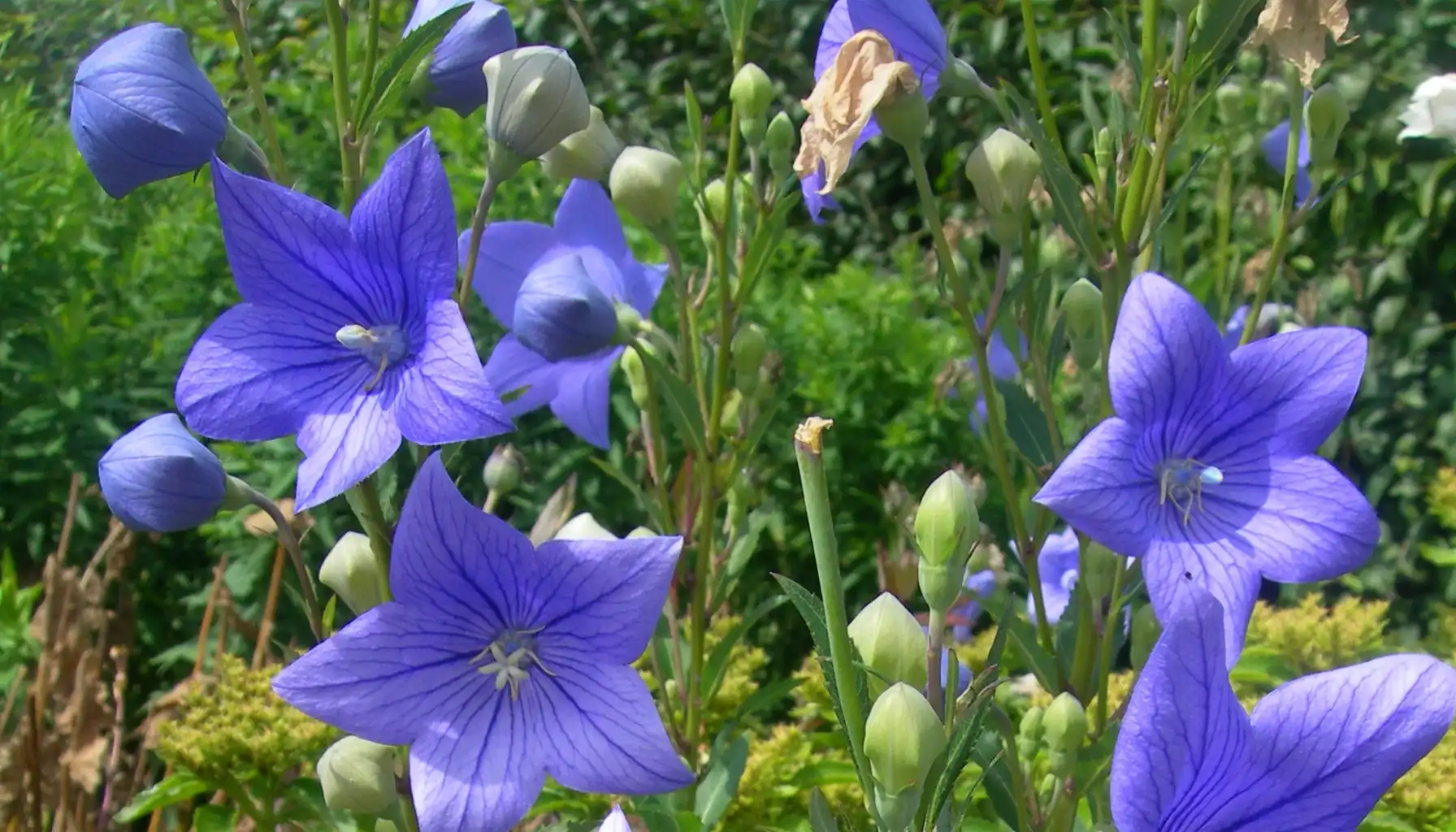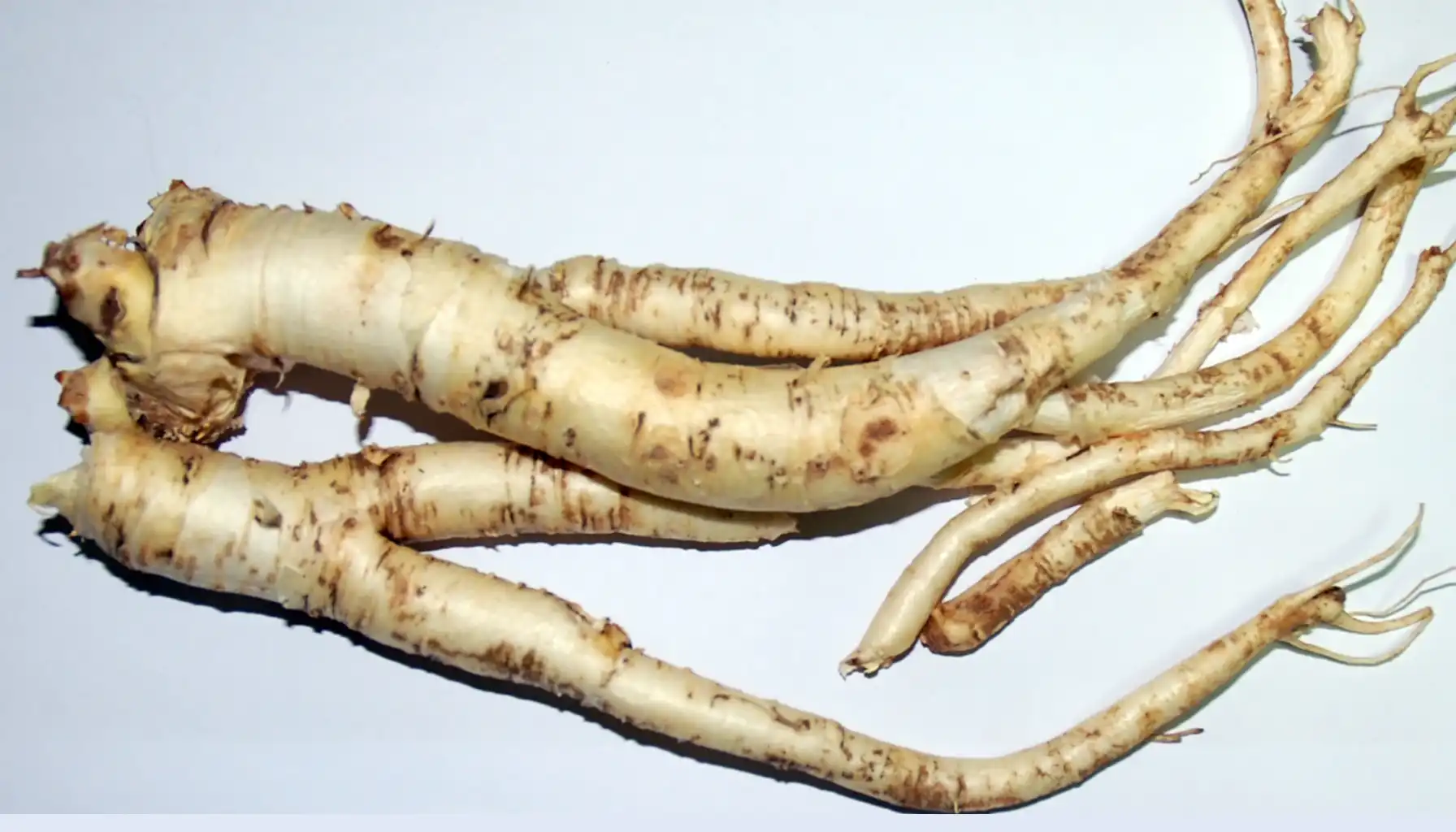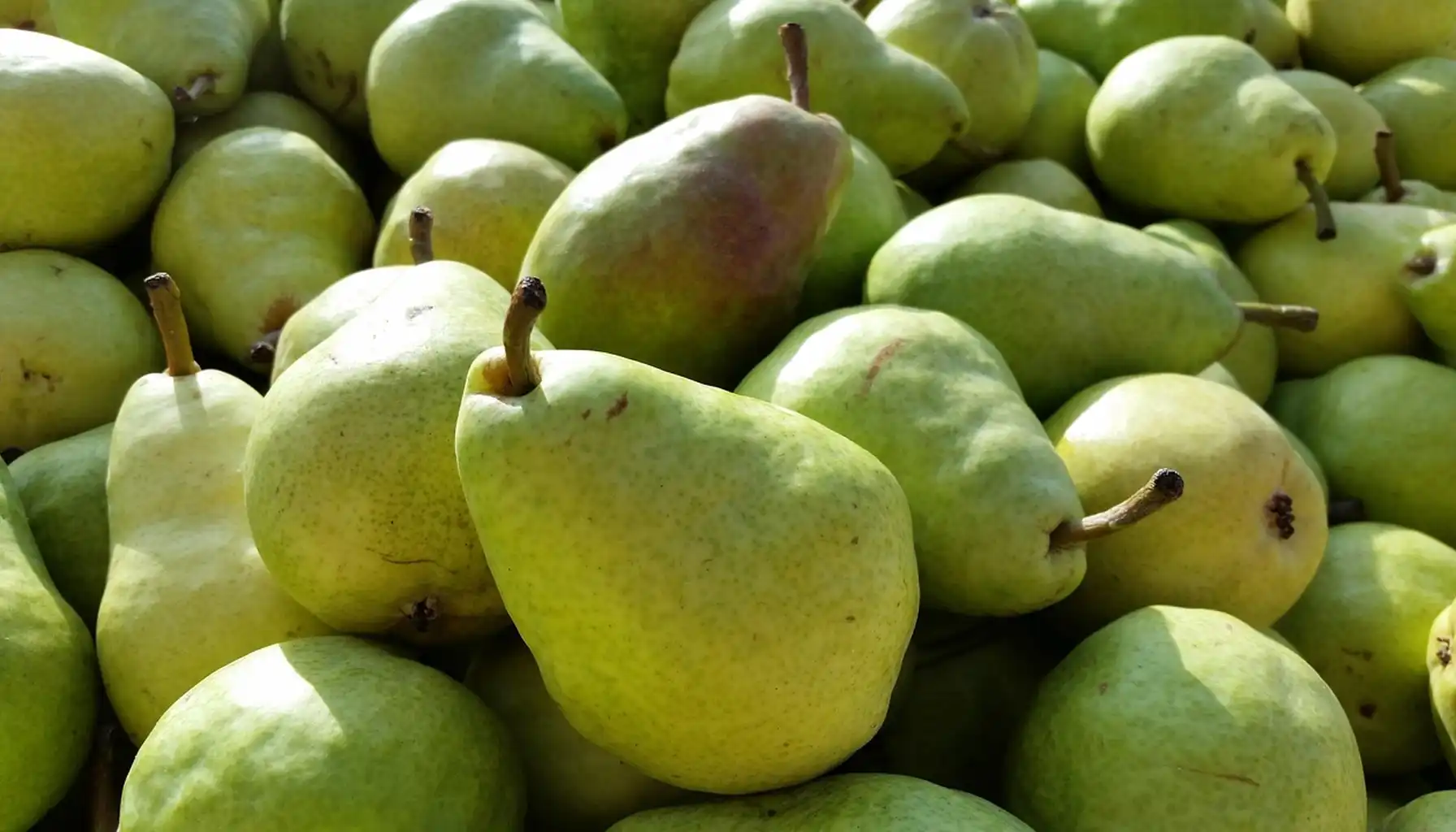The balloon flower plant (Platycodon grandiflorus) is native to East Asia. It’s a reliable summer bloomer that has a five-pointed flower.
Balloon flowers are part of the bellflower family (Campanulaceae) and prefer full sun to partial shade. They bloom in shades of blue, purple, pink, and white, blending easily into cottage, rock, or pollinator gardens.
Their upright form and neat clumps make them easy to place in borders or containers, and once established, they need minimal upkeep. Just water, some plant identification, online disease scan from time to time, and that’s it.
Botanical Overview
Known botanically as Platycodon grandiflorus, the Chinese balloon flower is a herbaceous perennial native to China, Korea, Japan, and parts of Russia.
This long-lived perennial forms neat clumps with upright stems and produces its signature balloon-like buds that open into five-pointed, bell-shaped blossoms.
Typical balloon flower height ranges from 12 to 30 inches, with a spread of about 12 to 18 inches. The plant’s tidy form and slow expansion make it easy to manage in mixed borders, rock gardens, or containers.
It’s hardy in USDA zones 3–8, tolerating cold winters and warm summers with minimal care. It can be on the list of The Best Bluestone Perennials in 2025. The balloon flower leaves are blue-green, lance-shaped, and finely toothed, creating a soft texture that complements the starry blooms. Leaves grow alternately along the stems, sometimes forming small whorls, and remain attractive through the growing season.
This plant prefers well-draining, loamy soil enriched with organic matter and grows best in full sun to partial shade. It’s resistant to most pests and diseases, though overwatering can lead to root rot.
Botanical Name | Platycodon grandiflorus |
Common Name | Balloon Flower, Chinese Bellflower |
Family | Campanulaceae |
Native Range | East Asia (China, Korea, Japan, Russia) |
Height | 1–2.5 feet |
Spread | 1–1.5 feet |
Hardiness | Zones 3–8 |
Foliage | Lance-shaped, toothed, blue-green leaves |
Bloom Time | June–August |
Balloon Flower Appearance
The range of balloon flower colors includes shades of blue, purple, pink, and white. The blue balloon flower is the most iconic and widely planted, used to anchor cool-toned garden palettes.
The purple balloon flower pairs with silver foliage or white blooms. The white balloon flower is used in shaded borders and contrasts well with darker-leaved companions.
Each flower typically measures 2 to 3 inches across and blooms singly or in small clusters atop upright stems. The buds start pale green, gradually deepening in color as they inflate and prepare to open. Flowers bloom from early summer through late summer.
Popular Varieties
Flowers come in several cultivated forms. There are tall border plants, compact container-friendly selections, all sharing the same balloon-like buds and star-shaped blossoms. Many are easy to grow from balloon flower seeds or can be purchased as young balloon flower seedlings for quicker results.
Among the most types is the Astra Series, which has the Astra pink balloon flower, a compact variety with double-layered blooms and soft rose-pink petals. Astra plants stay under 10 inches tall; you can plant them for edging and containers. They bloom heavily in early summer and continue through the season with regular deadheading
The Fuji Series is the classic tall option, reaching up to 30 inches. Fuji flowers have large blooms in blue, pink, or white and are ideal for middle or back borders. Their strong stems and generous flowering make them reliable garden performers
The Komachi variety has its buds remain closed, preserving the balloon shape even after flowering time
Sentimental Blue is a dwarf type growing only 6–8 inches tall. It produces numerous blue-violet flowers and works beautifully in rock gardens or shallow pots
Variety / Series | Color | Height | Bloom Style | Notes |
Astra Pink | Pink | 8–10 in | Double petals | Compact, heavy bloomer |
Fuji Blue / White / Pink | Blue, white, pink | 24–30 in | Single, large flowers | Classic tall border plant |
Komachi | Blue-purple | 12–18 in | Stays balloon-shaped | Unique buds that remain closed |
Sentimental Blue | Blue-violet | 6–8 in | Single flowers | Dwarf habit, ideal for containers |
Astra White | White | 10–12 in | Double petals | Clean color, good contrast in mixed beds |
Planting & Growing Conditions
Flowers are resilient and easy to establish if given the right start. Successful balloon flower care begins with choosing a sunny spot and preparing soil that drains well yet retains moderate moisture.
They grow in full sun to partial shade and prefer rich soil with a pH between 5.5 and 7.5. Before planting, work compost or aged manure into the bed to boost fertility. Avoid heavy clay or soggy areas, as excess water can cause root rot.
Flowers can be grown from seed, transplants, or nursery starts. When using seeds, expect blooms in the second year; young plants or seedlings often flower sooner.
Follow this balloon flower step by step guide:
Choose a location. Pick a sunny to partly shaded site with well-drained soil
Prepare soil. Loosen 8–10 inches deep; mix in compost
Plant. Sow seeds 1/16 inch deep or set seedlings at crown level
Water. Moisten thoroughly after planting; keep lightly damp until established
Mulch. Apply a thin organic layer to hold moisture and mark the plant location
Allow at least 12–18 inches between plants to give roots space and prevent crowding. Flowers dislike transplanting because they have delicate taproots, so choose a permanent spot from the start.
Watering, Soil, and Fertilizer
They tolerate short dry spells, but these plants prefer evenly moist, well-draining soil that never stays soggy. Overwatering can cause rot, especially around the balloon flower root, which is fleshy and prone to damage in compacted or wet soil.
During the first growing season, water regularly to help the roots establish deeply. Once mature, flowers need watering only when the top inch of soil feels dry. In prolonged heat or drought, increase watering frequency, but always allow the soil to dry slightly between sessions.
The ideal soil mix is loamy, rich in organic matter, and slightly acidic to neutral (pH 5.5–7.5). Amending garden beds with compost each spring improves fertility and drainage. For container-grown plants, choose a potting mix labeled for perennials or flowering plants and ensure the container has drainage holes.
Flowers are light feeders and generally thrive without heavy fertilization. In fertile soil, a yearly layer of compost is usually sufficient. For poor soils, apply a balanced, slow-release fertilizer (such as 10-10-10) in early spring when new growth emerges. Avoid over-fertilizing, which can lead to excessive foliage and fewer blooms.
Propagation & Seed Starting
Flowers are easy to grow once, but can be tricky to move because of their deep taproots. But you can start again with new plants from balloon flower seedlings.
Starting from Seed
Seeds can be started indoors about 6-8 weeks before the last frost. Use a seed tray filled with a light, well-draining mix. Scatter seeds on the surface and gently press them down. Don’t cover heavily, because light aids germination. Keep the mix moist and place the tray in a warm, bright spot around 65–70°F. Germination usually takes 2–3 weeks.
When seedlings develop two true leaves, thin or transplant them into individual cells. Gradually harden them off before planting outdoors. Direct sowing is also possible after frost, though plants may not bloom until their second year.
Using Seedlings
Nursery-grown balloon flower seedlings are a faster path to blooms. Transplant them in spring or early fall, keeping the crown level with the soil surface. Because the taproot is delicate, handle plants gently and avoid disturbing the roots.
Propagation by Cuttings
Stem cuttings can also produce new plants. Take a 4-inch cutting from non-flowering growth in late spring, remove lower leaves, dip in rooting hormone, and place in moist potting mix. Keep covered in bright, indirect light until roots form.
Division is generally discouraged because mature plants dislike root disturbance. Instead, focus on seeds or cuttings for reliable results.
Common Problems & Solutions
Problem | Likely Cause | Solution |
Yellowing leaves | Overwatering or poor drainage | Improve drainage, reduce watering |
Wilting despite moist soil | Root rot | Remove damaged roots, replant in fresh soil |
Leggy growth | Too much shade / excess nitrogen | Move to a sunnier spot, balance fertilizer use |
Floppy stems | Rapid growth in rich soil | Cut back by half in late spring to strengthen |
Chewed leaves | Slugs or snails | Apply organic bait, natural pesticides, or traps |
Sparse blooms | Low light or nutrient imbalance | Increase sun exposure, apply compost in spring |
Companion Plants & Garden Placement
Good balloon flower companion plants have perennials that enjoy similar conditions: full sun to partial shade and well-draining, moderately moist soil. Hostas, ferns, and astilbes have lush foliage contrast that highlights the balloon flower’s upright stems and starry blooms.
Daylilies, coreopsis, and salvia extend the flowering season and attract pollinators. For a cool-toned palette, mix with lavender, Russian sage, or catmint; for a softer look, pair with white daisies or lamb’s ear.
In borders, place taller balloon flower varieties like Fuji Blue in the middle layer, surrounded by medium perennials and groundcovers at the front. Compact types such as Astra Pink and Sentimental Blue make excellent edging plants or additions to mixed containers.
Flowers also live in rock gardens or raised beds, where drainage is optimal. Because they reappear late in spring, marking their location with companion plants helps prevent accidental digging during early bed cleanup.
Symbolism & Meaning
The balloon flower meaning in Japan and Korea, symbolizes honesty, loyalty, and eternal love; it is a common choice in traditional art, folklore, and ceremonial gardens. Its five-pointed star shape is sometimes linked to the five elements: earth, air, fire, water, and spirit.
The plant has practical value in East Asian herbal medicine. The roots of Platycodon grandiflorus have long been used in teas and remedies believed to support respiratory health.
Health & Herbal Uses
The balloon flower has a long history in traditional East Asian medicine, especially in Korea and China. The plant’s root, known as jie geng in Chinese herbalism, has been valued for centuries for its potential respiratory and immune-supporting properties. It’s commonly used in teas, syrups, and herbal formulas designed to ease coughs and soothe sore throats.
One of the most recognized balloon flower tea benefits is its ability to help clear the lungs and support healthy breathing. The tea is often brewed from dried roots, which are simmered gently to extract their active compounds. Some studies suggest that balloon flower root may contain natural anti-inflammatory and antioxidant substances, though scientific research is still ongoing.
In addition to respiratory uses, the root has traditionally been included in blends for digestion and reducing phlegm. It’s mild in flavor, with a slightly bitter, earthy taste that pairs well with honey or ginger.
Medicinal use should be guided by a qualified practitioner, especially for those with medical conditions or who take prescription medications. Gardeners who grow flowers for ornamental purposes should avoid consuming plants treated with fertilizers or pesticides not approved for edible crops.
Conclusion
Once established, the flower needs minimal attention, just well-drained soil, steady moisture, and plenty of sun. Choose suitable varieties, plant carefully, and maintain balanced watering, so gardeners can enjoy vibrant displays year after year.
Frequently Asked Questions
Do flowers come back every year?
Yes. Flowers are herbaceous perennials that die back in winter and re-emerge in spring, returning reliably each year with minimal care.
What is the typical balloon flower height?
Most varieties grow 12 to 30 inches tall. Compact types like ‘Sentimental Blue’ stay under 8 inches, while taller Fuji cultivars can reach 2½ feet.
How do I provide proper balloon flower care?
Plant them in full sun to partial shade, water when the top inch of soil dries, and use rich, well-draining soil. Add compost in spring and deadhead faded blooms for a tidy look.
When should I plant balloon flower seeds?
Start balloon flower seeds indoors 6–8 weeks before the last frost or sow directly in the garden after frost has passed. Expect flowers the second year from seed.
Do flowers spread?
They may self-seed lightly, forming small colonies over time, but they aren’t invasive. You can control the spread by removing seed heads after flowering.
Are flowers easy to grow from seedlings?
Yes. Transplant balloon flower seedlings in spring or fall, handling roots gently since they dislike disturbance.
Can flowers grow in containers?
Absolutely. Choose a deep pot to accommodate the taproot and use a well-draining mix. Water regularly, but avoid soggy soil.
What colors are available?
Common shades include blue, purple, pink, and white, with double and dwarf varieties also offered.
Related AI Plant Finder Posts
